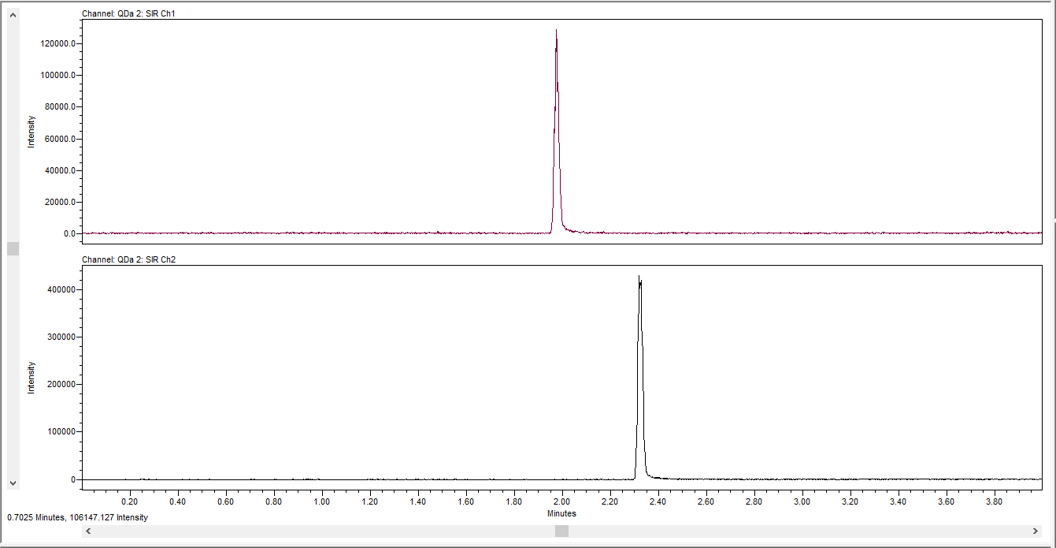How to calculate resolution between peaks that are in different channels - Tip260
OBJECTIVE or GOAL
There are two ways you can do this, and this tip addresses the first way (i.e., combining the two channels into one channel and then calculating the resolution between the two peaks. It doesn’t matter what type of data you are working with: UV, fluorescence, mass spec and so forth). In this example, we are working with SIR channels from the QDa mass detector.
ENVIRONMENT
- Empower
- Empower Tip of the Week #260
PROCEDURE
STEP 1
We have a stack plot of the two channels of data, each with its own peak eluting at different retention times. In this example, we can add the two channels together and then calculate the resolution between the peaks (figure 1).

STEP 2:
Open the Method Set that was used to collect and process the data (figure 2).

STEP 3
Right click on ‘Derived Channels’, select new ‘Derived Channel’ and on the ‘First (Only) Channel’ tab select the first channel from the drop-down list (figure 3).

STEP 4
On the Second Channel tab, select ‘+’ from the ‘Operator’ drop down list. Select the second channel from the drop-down list. Check the ‘From injection Labeled’ box and enter the label for the injection (figure 4).

STEP 5
Click ‘OK’ and name the derived channel. It now appears in the channel table along with the two original channels (figure 5).

STEP 6
Apply the Method Set. You now see the combined chromatogram (figure 6).

STEP 7
The resolution is now calculated between the two peaks (figure 7).

ADDITIONAL INFORMATION
Final Note: This can be done with either the Pro or QuickStart interface.
id226690, EMP2LIC, EMP2OPT, EMP2SW, EMP3GC, EMP3LIC, EMP3OPT, EMP3SW, EMPGC, EMPGPC, EMPLIC, EMPOWER2, EMPOWER3, EMPSW, SUP

